Qinhuangdao Shanhaiguan Scenic Area
Shanhaiguan, also known as Yuguan, Yuguan and Linluguan, is located 15 kilometers northeast of Qinhuangdao City, Hebei Province. It is one of the Northeast passes of the Great Wall of the Ming Dynasty. Before 1990, Shanhaiguan was regarded as the starting point of the eastern end of the Great Wall of the Ming Dynasty. It has been known as one of the "three wonders" of the Great Wall of China (Shanhaiguan in the east, Beitai in Zhongzhen, Jiayuguan The name "Yiguan", "the throat of border counties and the guarantee of Beijing Teachers" echoes the Jiayuguan Pass thousands of miles away and is well-known all over the world.
In the 14th year of Hongwu Ming Dynasty (1381), the city was built, and the Customs was built and guarded. Because of its dependence on mountains and seas, it was famous as Shanhaiguan. The Shanhaiguan City is about 4 kilometers in circumference and connected with the Great Wall. The city is the gateway. It is 14 meters high and 7 meters thick. It has four main gates and a variety of defensive buildings. Including the Arrow Tower, Jingbian Tower, Muying Tower, Linlu Tower, Wengcheng and the 1350-meter-long Great Wall of the Ming Plain.
On March 4, 1961, the Great Wall-Shanhaiguan was announced by the State Council as the first batch of national key cultural relics protection units. In December 1987, the Great Wall was listed as a World Heritage Site.
Shanhaiguan is located at the eastern end of the Great Wall of the Ming Dynasty. It is the only place where the Great Wall of the Ming Dynasty meets the sea. To the north is the western section of the Liaoxi Corridor, which is located in a dangerous terrain, so historians also call it "Jieshidao". Guancheng is known as Shanhaiguan because it relies on Yanshan in the north and Bohai Sea in the south. Hebei and Liaoning are bounded here.
Shanhaiguan was formerly known as Yuguan, Yuguan, Linyuguan and Linluguan. Guyuguan is located 20 Li East of Funing County. Depending on Chongshan in the north and the sea in the south, it is only a few miles apart and very dangerous. Before 1990, it was regarded as the Northeast starting point of the Great Wall of the Ming Dynasty (the discovered starting point of the Great Wall of the Ming Dynasty was Hushan Town, Kuandian County, Dandong City, Liaoning Province).
Sui Kaihuang three years (583), built Yuguan city.
In the nineteenth year of Tang Zhenguan (645), Emperor Taizong of the Tang Dynasty conquered Koryo and returned from Linyu.
During the reign of Qianhua in the later Liang Dynasty of the Five Dynasties, Yuguan was taken by Qidan. Xue Juzheng pointed out that "Yuguan is surrounded by sea on all three sides, with land in the north. From the north of Yuguan to Jinniukou, the old eight defensive soldiers were placed and recruited to guard them. Khitan dared not enter lightly. Li Cun, King of Jin Dynasty, took Youzhou and made Zhou Dewei a moderate envoy. He was brave and brave. He did not trim and prepare for Yuguan and lost the danger of Yuguan. Qidan ruminant herds between Ying and Ping prefectures, which is a great frontier trouble.
In the late Tang, Qing and Tai Dynasties, Zhao Dejun guarded Lulong, and Shi Jingjie rebelled in Taiyuan. He appealed to Khitan for help. His mother said, "If the Lulong Army goes north to Yuguan, it must be returned urgently. Taiyuan can not be saved."
In the late years of Song Xuanhe, Yuguan was the income of Nuzhen.
In the 14th year of Hongwu Ming Dynasty (1381), Xu Da, king of Zhongshan, was ordered to repair Yongping and Jieling Pass, and took troops to this place. He moved to build Shanhaiguan Pass 60 miles east of Guyuguan Pass, which was named Shanhaiguan because he relied on Yanshan in the north and Bohai in the south.
After Six Dynasties of Hongwu, Chenghua, Jiaqing, Wanli, Tianqi and Chongzhen, the Great Wall of Shanhaiguan Customs has consumed a great deal of manpower, material and financial resources. In 263 years, it has built a military city defense system linking seven cities and crossing the first line of the Great Wall.
At the end of Ming Dynasty, Qin Liangyu, a female general, guarded the Customs. Li Zicheng and Wu Sangui fought fiercely here.
In the 26th year of Guangxu in Qing Dynasty (1900), the eight-nation coalition invaded Shanhaiguan Customs.
In the summer of the eleventh year of the Republic of China (1922), Zhi and Feng warlords fought on the West Bank of the Shihe River. In the autumn of 1924, they fought again in the areas of Guanjia Tomb, Weiyuan City and Jiangnu Temple outside Shanhaiguan.
In 1922 (1933), Japanese invaders occupied Shanhaiguan.
In September 1945, the Eighth Route Army, Hebei Re-Liao Army and the Soviet Red Army captured and liberated Shanhaiguan City.
In the thirty-fifth year of the Republic of China (1946), the People's Liberation Army (PLA) carried out the Shanhaiguan Customs Defense War. All these wars have caused varying degrees of damage to the walls of Shanhaiguan Customs and Dongluo City.
In 1958, on the south wall 260 meters west of the South Gate of Shanhaiguan Customs, a 21-meter wide wall gap was opened as a passageway.
In 1961, Shanhaiguan was listed as the first batch of national key cultural relics protection units.
In the late 1960s and early 1970s, interconnected air-raid shelters were built in the walls, with brick openings.
From 1956 to 1994, the city walls from Zhendong Building to Weiyuan Hall and Zhendong Building to Jingbian Building were successively repaired, and the Jingbian Building, Muying Building and Linlu Building were repaired. The main contents of the city walls are as follows: the green brick interior wall between Jingbian Building and Zhendong Building, the rubble interior wall between Zhendong Building and Weiyuan Hall, the stack wall and the building wall were repaired. The exterior wall between Jingbian Building and Linlu Building was restored, and the city surface between Jingbian Building and Zhendong Building was restored.
In order to facilitate access to the world's first pass, in 1980, a 35-metre-wide wall gap was opened to the east of Nanmen Road.
In 1987, in order to coordinate the style and features of the ancient city, four coupon doors were built at the entrance, two of which are the same, with a height of 6.8 meters, a width of 6 meters and a length of 16 meters; two on both sides are the same, with a height of 5.9 meters, a width of 5 meters and a length of 16 meters.
In 1987, the Great Wall of China, including Shanhaiguan, was listed on the World Heritage List.
In 1985, Shanhaiguan was listed as the top ten scenic spots in China.
In 2000, it was awarded the title of "Demonstration Site of National Civilized Scenic Spot" by the Central Civilization Office and the National Tourism Bureau;
In 2007, the National Tourist Scenic Spots Quality Grade Assessment Committee approved the first batch of national 5A tourist attractions.
On October 9, 2015, Shanhaiguan Scenic Spot was criticized by the State Tourism Administration and the 5A qualification was cancelled.
Shanhaiguan's city pool, about 4 kilometers in circumference, is a small city, the whole city pool is connected with the Great Wall, with the city as the gateway. The city has four main gates and many ancient defense buildings. It is a relatively complete defense system of the city pass, known as "the first pass in the world". Majestic "the first pass in the world" arrow tower as the main body, supplemented by Jingbian Tower, Linluo Tower, Muying Tower, Weiyuan Hall, Wengcheng, Dongluo City, Great Wall Museum and other Great Wall buildings.
In 1952, the Chinese government organized the maintenance works of Juyongguan, Badaling and Shanhaiguan Great Wall, which was the first batch of Great Wall protection and maintenance works in New China.
On March 4, 1961, the Great Wall-Shanhaiguan Customs was announced by the State Council as the first batch of key national cultural relics protection units.
In December 1987, the Great Wall was listed as a World Heritage Site.
In 2003, the protection and development project of Shanhaiguan ancient city was launched.
In 2004, the Ximen City Platform of Nanmen was repaired and strengthened. And repair Wangyanglou.
In 2005, the 70-metre City Wall Road East of Nanchengtai and the 20-metre city wall west of Xichengtai were completed, the 70-metre City Wall Road North and south of Xichengtai were repaired, the inner city wall, the road, the city surface and the mound wall were repaired, and the wall was preliminarily strengthened.
In April 2006, Hebei Province launched the Shanhaiguan 6000m Great Wall body restoration project. In 2008, the Shanhaiguan 6000m Great Wall body restoration project was completed.
On September 20, 2006, the 150th executive meeting of the State Council adopted the Regulations on the Protection of the Great Wall, which came into effect on December 1, 2006.
In 2009, after six years of restoration, the protection and development project of Shanhaiguan Ancient City, which invested nearly 2 billion yuan, was completed. The ancient city Ming and Qing Cultural Commercial Street, which had a construction area of 100,000 square meters and restored the style of Ming and Qing Dynasties, was officially opened to visitors.
On April 18, 2012, the Home Cultural Relics Bureau approved the "Request for Presentation of the Design Scheme for Roof Maintenance and Reinforcement of East Building in Shanhaiguan Town" (Ji Cultural Relics Word 4) issued by Hebei Provincial Cultural Relics Bureau, and agreed in principle to the proposed scheme.
On June 03, 2014, the State Administration of Cultural Relics approved the "Request for Report on the Establishment of the Project of Preservation and Maintenance of the Old Battalion Site of Shanhaiguan-British Battalion Site" (No. 385 of Hebei Cultural Relics Word ) issued by Hebei Provincial Bureau of Cultural Relics, and agreed to establish the project of renovation of the Old Battalion Site of Shanhaiguan-British Battalion Site.
On June 9, 2014, the State Administration of Cultural Relics approved the "Request for Presentation of the Design Plan for the Protection and Maintenance of the Great Wall of Shanhaiguan (North Guancheng to Hanmen Pass)" (Ji Cultural Relics Word 159), and agreed in principle with the reported section of the Great Wall of Shanhaiguan from Guancheng North to Hanmen Pass (Great Wall Identification Code: North Shuiguan Great Wall, Paragraph 1). The protection and maintenance engineering design scheme of the wall 130303382103170007, the wall 130303382103170008 of the second section of Beishuiguan Great Wall and the wall 130303382103170009 of the first section of Jiaoshan Great Wall.
In December 2016, the Ninety-ninth Executive Meeting of the Hebei Provincial Government adopted the Measures for the Protection of the Great Wall of Hebei Province, which came into effect on February 1, 2017.
Value of cultural relics
Shanhaiguan is the first batch of key cultural relics protection units in China, and was listed in the World Cultural Heritage List in 1987.
The plaque of "the first pass in the world" is 5 meters long and 1.5 meters high. Each word is more than one meter long. It is said that the inscription of Jinshi and Xiao Xian of Shanhaiguan in the eighth year of Chenghua in the Ming Dynasty is a regular script with vigorous brushwork, which is integrated with the style of the city building and can be called a masterpiece of ancient and modern times.
Architectural value
Shanhaiguan Ancient City is an important military city defense system on the Great Wall of the Ming Dynasty. The East Building of Dongmen Town is magnificent. Because of its narrow location and dangerous situation, it is also the first gateway in the east of the Great Wall, so it is called "the first gateway in the world", and it is the landmark building of Shanhaiguan Ancient City. Buildings, Linlu Tower and Weiyuan Hall, five enemy buildings lined up, evenly distributed on the Great Wall line more than 1,000 meters long, called "Wuhu Town East". Bell and Drum Tower was built in the center of the city, and the streets and alleys of Guancheng were chessboard-like layout. Outside the city, four urns arched and guarded, forming a heavy city and guarding momentum; on the outer layer, Luocheng, Yicheng, Acropolis, Sentry City, etc. It shows the stringent architectural style of city defense in ancient China.
Wengcheng is the most precious city in the Great Wall architecture. Although it is small in scale, it plays an important role. First, in case of enemy intrusion, we can close the door as a two-way defense line to make the enemy "turtle in the urn"; second, from the architectural point of view, the urn city outside the city will be protected, forming a strong and grand situation, reflecting the characteristics of the Great Wall defense project.
military value
The first pass in the world is the first one at the eastern starting point of the Great Wall. It is the boundary between the inside and outside of the Great Wall. It is an important barrier for Beijing, the capital division of the Ming Dynasty. It is a historic and humanistic scenic spot mainly displaying the important gates of Ming Dynasty and the Great Wall of Plains . Shanhaiguan is an important military town and strategic place. During the reign of Ming Xuande, Shanhaiguan was the only branch of Ming Military Department. It has unique military and political value. From its establishment to the fall of the Ming Dynasty, over 200 years, there were 90 officers in charge of some military departments.
Shanhaiguan is only about 280 kilometers away from Beijing, and the terrain between the two places is dominated by plains that are good for cavalry to attack. Because the special geographical location of Shanhaiguan is related to the safety of the capital division of the Ming Dynasty, Shanhaiguan gradually won the title of "the first customs in the world" from the middle and late Ming Dynasty. The so-called "first" in "the first pass in the world" not only means that Shanhaiguan is located at the eastern end of the Great Wall, but also shows its important geographical value in guarding the Liaoxi Corridor and the North China Plain.
historical value
Because of its pivotal position in the farming culture of the Central Plains and the nomadic culture of the Northeast, Shanhaiguan had a prominent commercial and trade status in the Ming and Qing Dynasties, with frequent business and travel between the Central Plains and ethnic minorities. Shanhaiguan was both a military and a commercial and trade center.
Shanhaiguan and its buildings played a decisive role in the Ming Dynasty to prevent the rise of the Nuzhen nationality in the Northeast and the residual forces of the Yuan Dynasty. After the Qing Dynasty came to power in the Central Plains, the Great Wall around Shanhaiguan lost its military defensive role, but it was still a major transportation hub in the Northeast and North China. The Qing Dynasty became the only way for emperors to worship their ancestors in Shenyang, and also the place for literati to climb the stairs and win the victory.
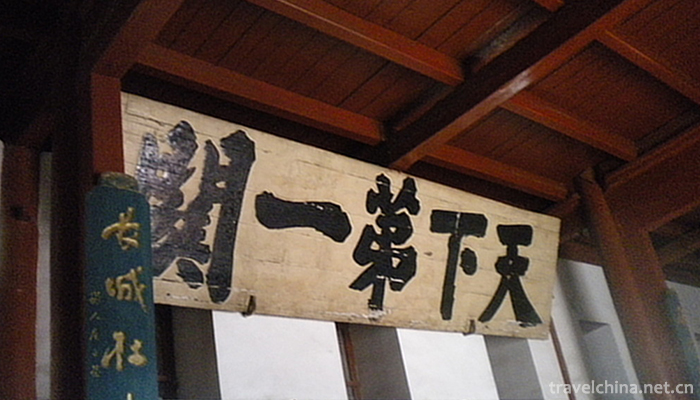
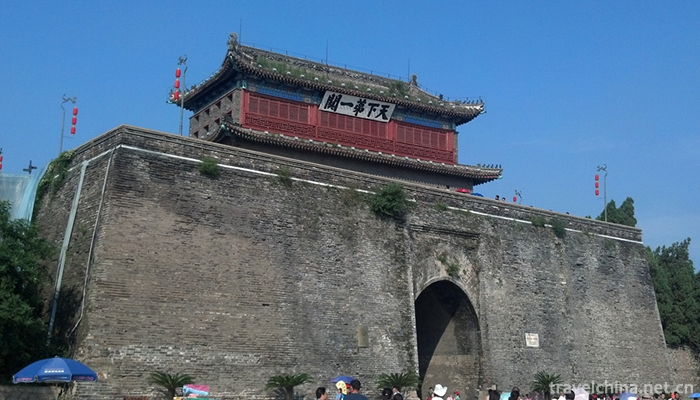
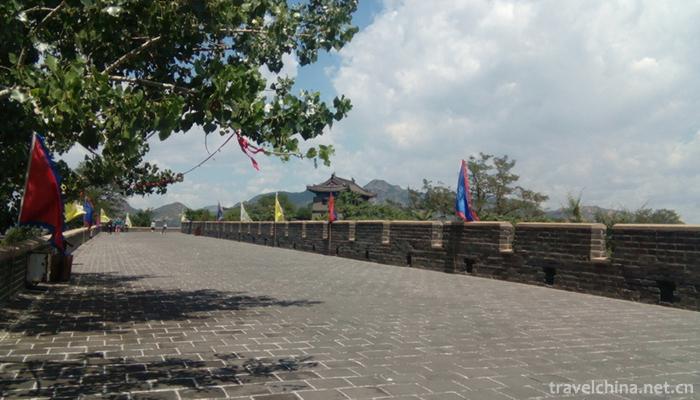
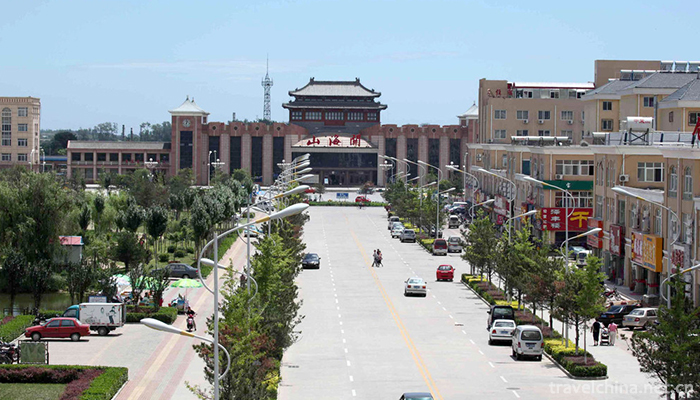
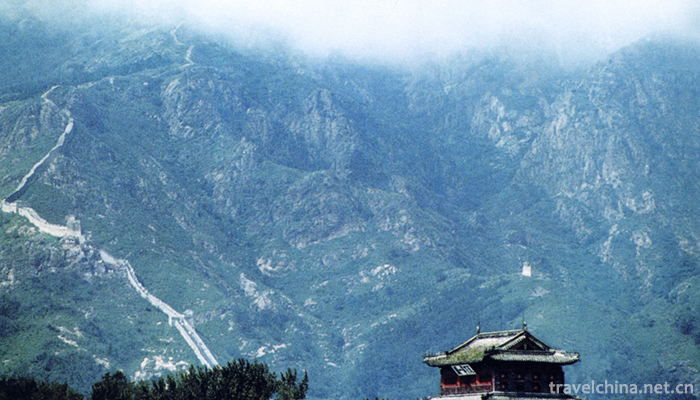
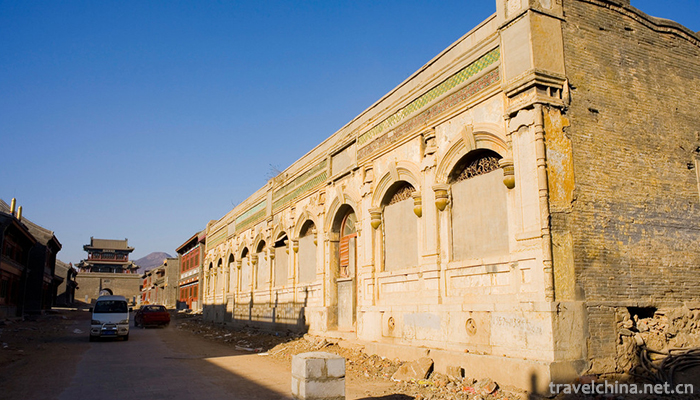
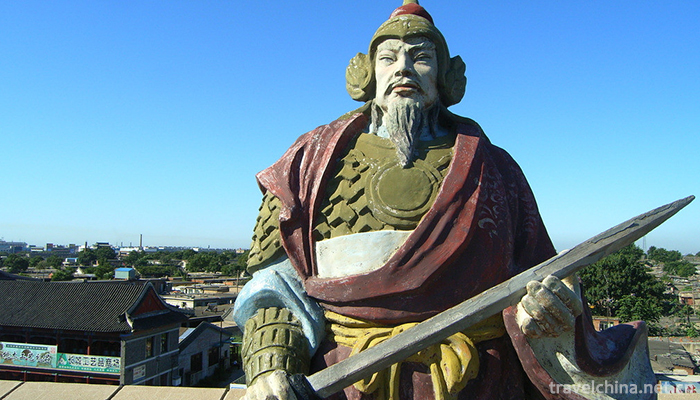

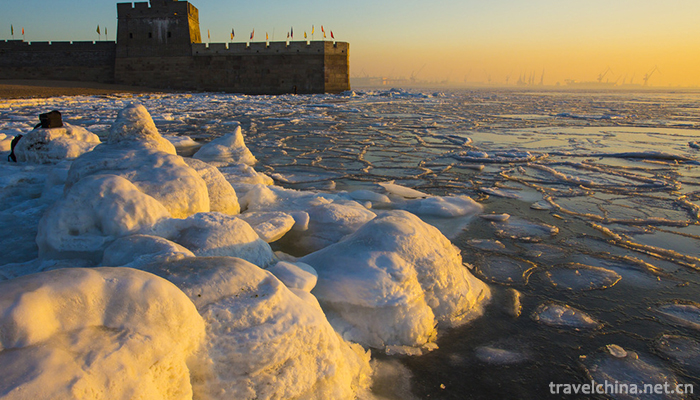


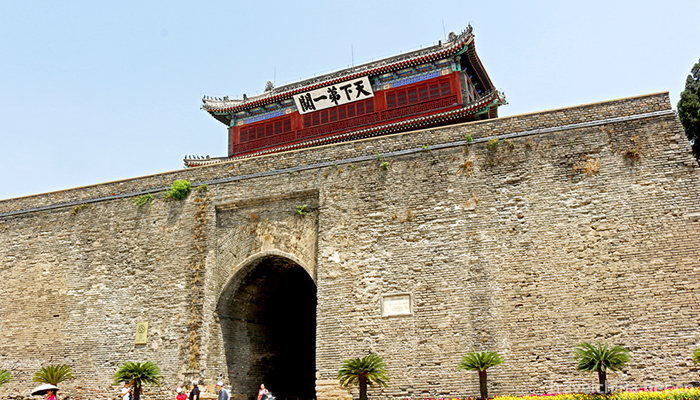
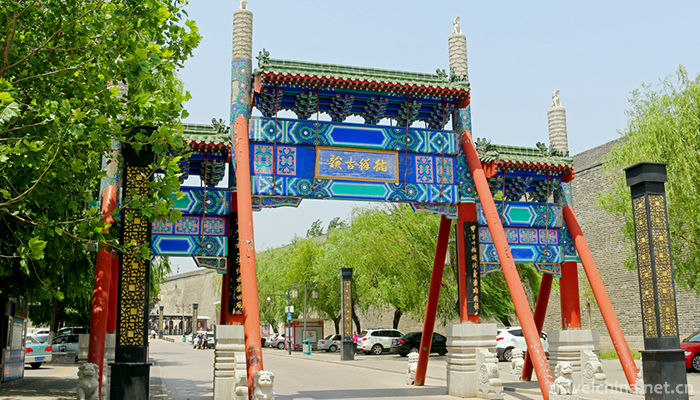

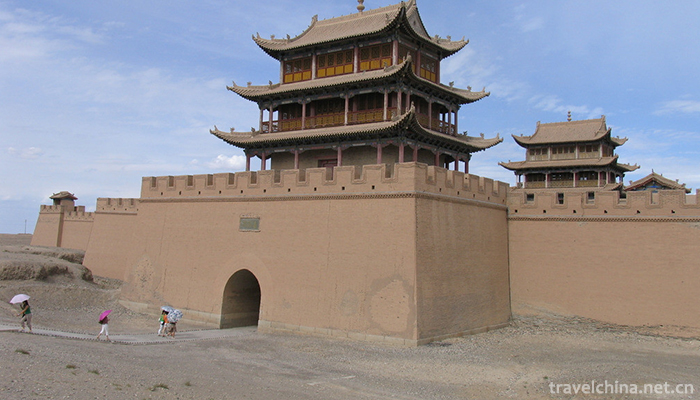
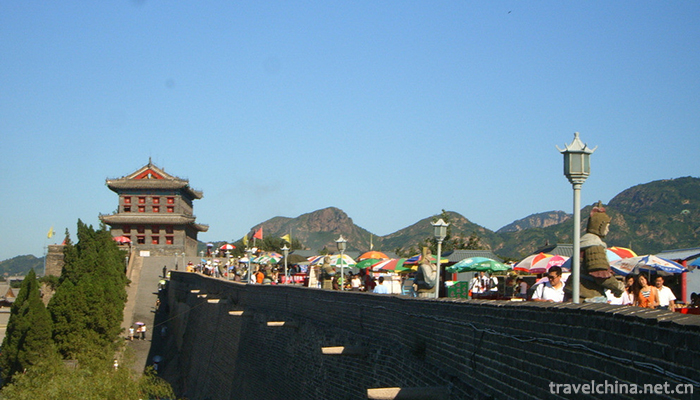
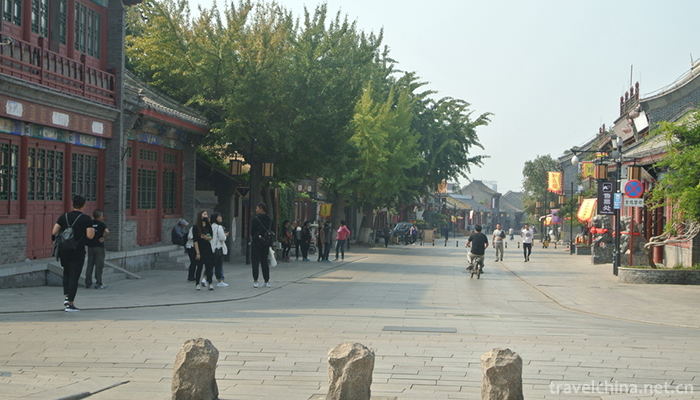
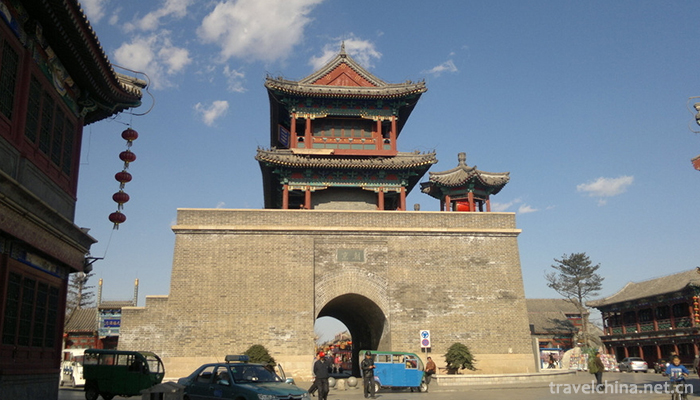
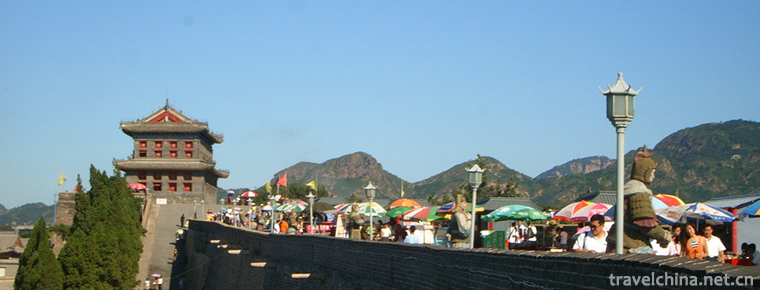
-
1.Fish Ball
Fish balls, also known as "fish wrapped meat", are mixed up with eel, shark or freshwater fish, mixed with sweet potato starch (* starch), and then wrapped
Time 2018-11-02 -
2.Martial Art
Wushu is a technology inherited from ancient military wars. Martial arts can strengthen the body and defend the enemy
Time 2018-11-13 -
3.Historic Architectural Complex in Heaven and Earth
Historic buildings in Tiandi, World Cultural Heritage, National Key Cultural Relics Protection Units and National AAAAA Tourist Scenic Spots are located in the hinterland and surrounding
Time 2019-02-21 -
4.Drawing Shantou Drawing
Drawing is a kind of embroidery, also known as "lace". Legend has it that yarn drawing originated in Italy, France and Portugal, and was developed on the basis of folk embroidery in the Midd
Time 2019-04-18 -
5.Legend of Filial Women in the East China Sea
The filial woman in the East China Sea is an ancient folklore story. Her real name is Zhou Qing. It comes from Biographies of LieNu and Biographies of Yu Dingguo.
Time 2019-04-27 -
6.Brewing Techniques of Old Vinegar
Qingxu old vinegar brewing skills, Shanxi Province Qingxu County local traditional skills, one of the national intangible cultural heritage.
Time 2019-05-11 -
7.Nanxi chant
Nanxi chant is popular in Qianjiang District of Chongqing City. Its origin can be traced back to Tang Dynasty. Its embryonic form is Tujia peasants'work chant and folk song chant, which are similar to
Time 2019-06-07 -
8.Guizhou opera
Guizhou Opera is one of the local operas popular in Guizhou Province. It evolved and developed from the opera Yangqin (also known as "Wenqin", "Guizhou Playing Ci")
Time 2019-06-10 -
9.Yao Costume
Yao people used to call themselves "Guoshan Yao", "Hongtou Yao", "Dabanyao", "Pingtouyao", "Blue Indigo Yao", "Shayao" and "Baitou Yao&
Time 2019-07-11 -
10.Shaoshutun and Munona
Manmaisankang National AAA Scenic Area, where every day the love story between Zhaoshu Tun and the Peacock Princess Munona, beautiful music, more than 100 peacocks falling from the sky, the beautiful
Time 2019-07-25 -
11.Cultural undertakings in Panzhihua
As of the end of 2018, Panzhihua has 3 museums and exhibition halls; 50 cultural (Art) museums, including 44 cultural stations and 8 theatres and cinemas; and 6 public libraries, with a total collection of 990800 books. There are 43 Township radio and television stations and
Time 2020-12-14 -
12.Meishan climate
Meishan city is located in the middle and low latitudes, located in the west of Sichuan Basin and the middle reaches of Minjiang River. It is characterized by the alternation of sea land monsoon every year. It has four distinct seasons, mild climate, abundant rainfall,
Time 2020-12-18